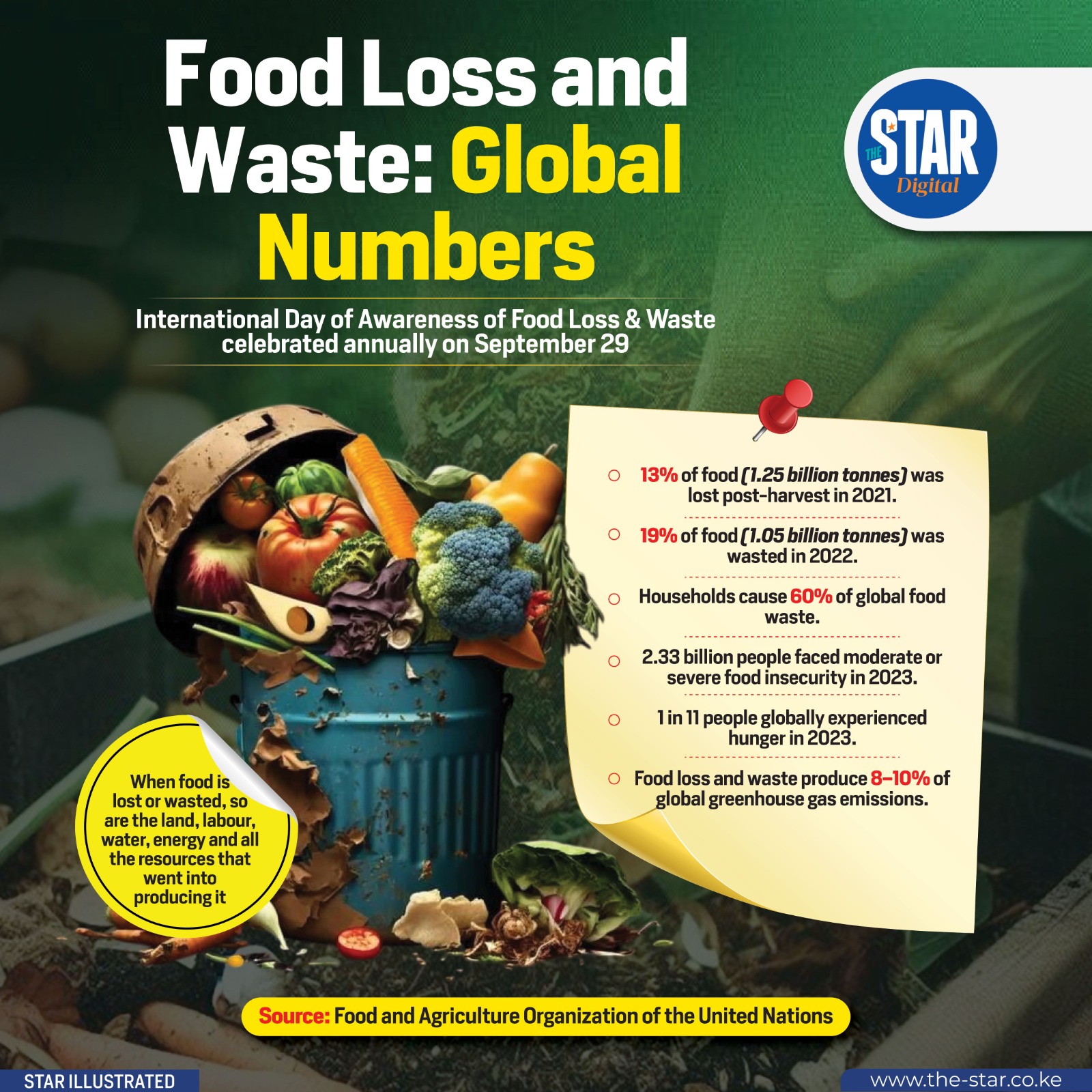

Food loss and waste remain staggering global challenges with far-reaching consequences.
In 2021, 13% of food—amounting to 1.25 billion tonnes—was lost after harvest, while 2022 saw 1.05 billion tonnes wasted, representing 17% of total food produced.
Households alone are responsible for 60% of this waste, underscoring the need for behavioral shifts at the individual level.
Meanwhile, food insecurity continues to rise. In 2023, 2.33 billion people faced moderate or severe food insecurity, with nearly half the global population affected.
The irony is stark: while billions go hungry, vast quantities of food are discarded, taking with them the land, labor, water, and energy invested in their production.
Beyond the human toll, the environmental impact is severe. Food waste contributes roughly 8–10% of global greenhouse gas emissions, making it a major driver of climate change.
Addressing this issue isn’t just about feeding more people—it’s about protecting ecosystems, conserving resources, and building more resilient food systems. Every meal saved is a step toward sustainability and equity.

















![[PHOTOS] Family, friends receive body of Raila’s sister, Beryl](/_next/image?url=https%3A%2F%2Fcdn.radioafrica.digital%2Fimage%2F2025%2F11%2Fdfe6a9bf-ede1-47a4-bdc0-4f564edb03dd.jpeg&w=3840&q=100)
